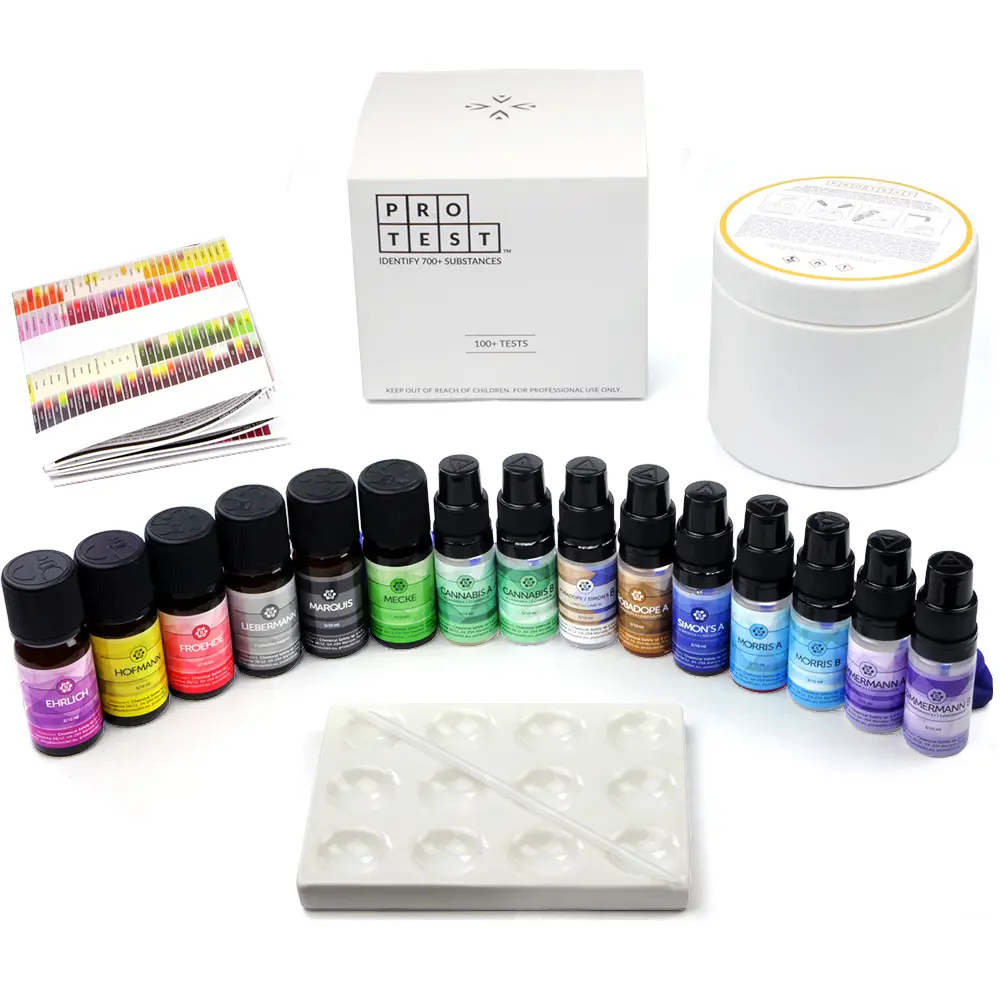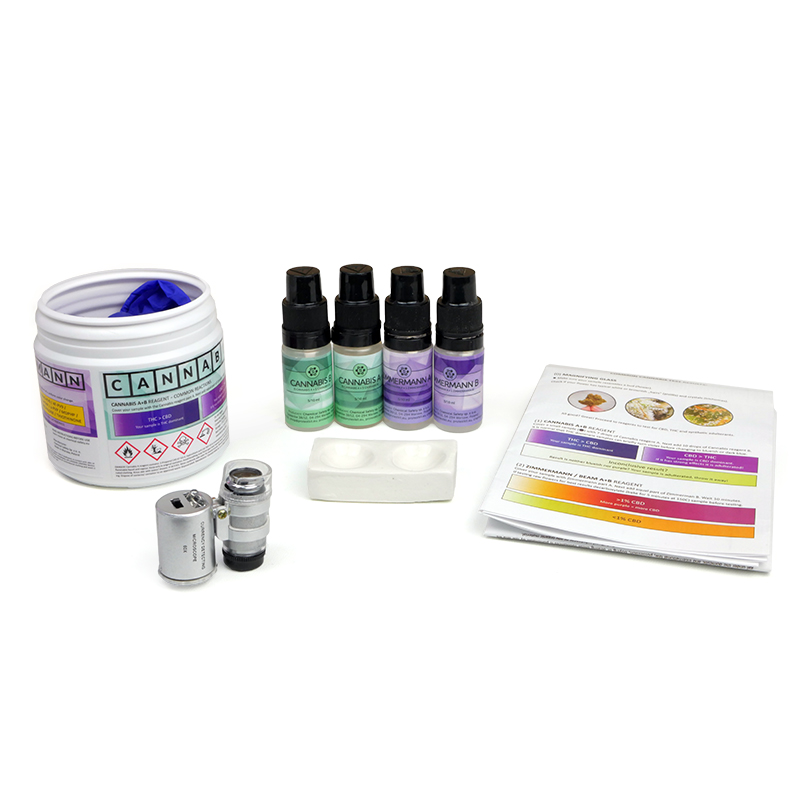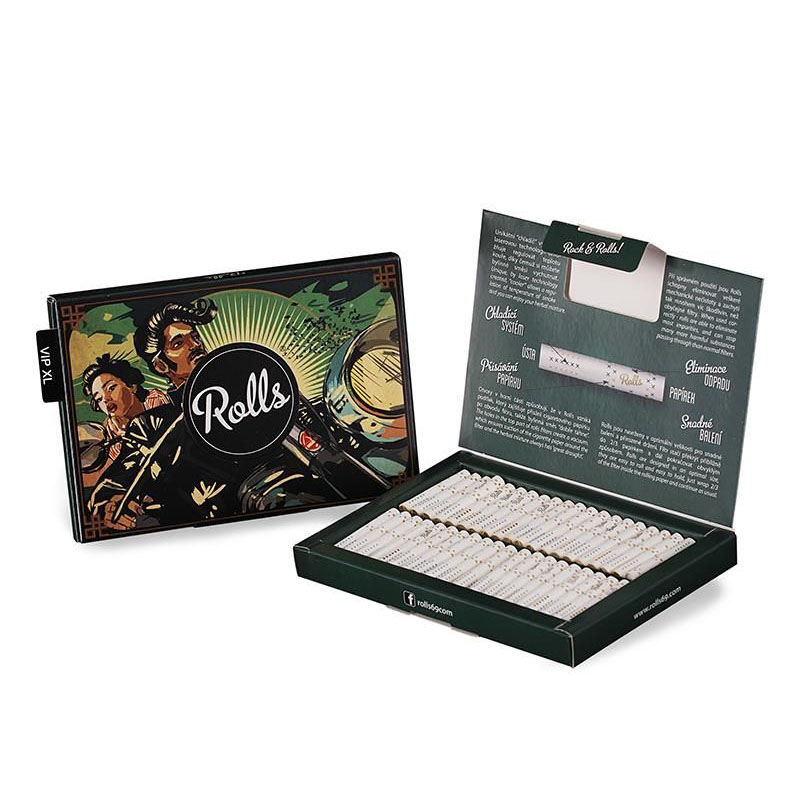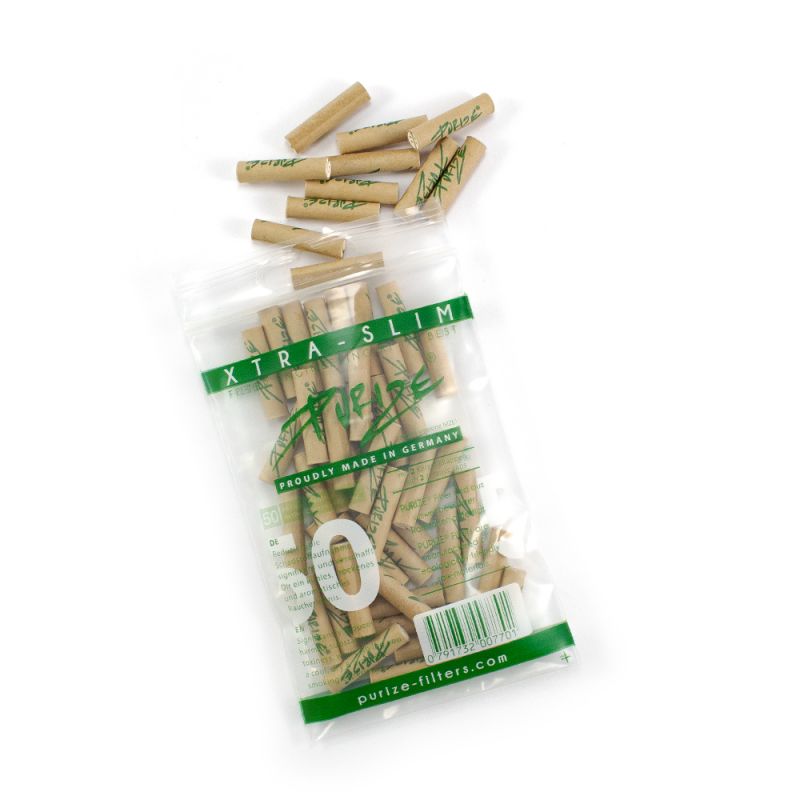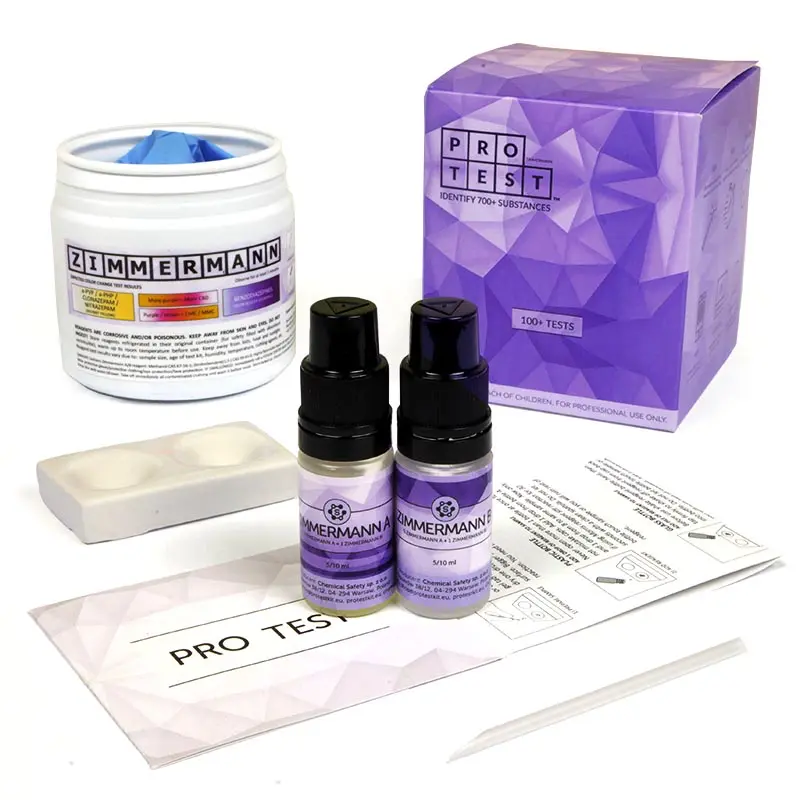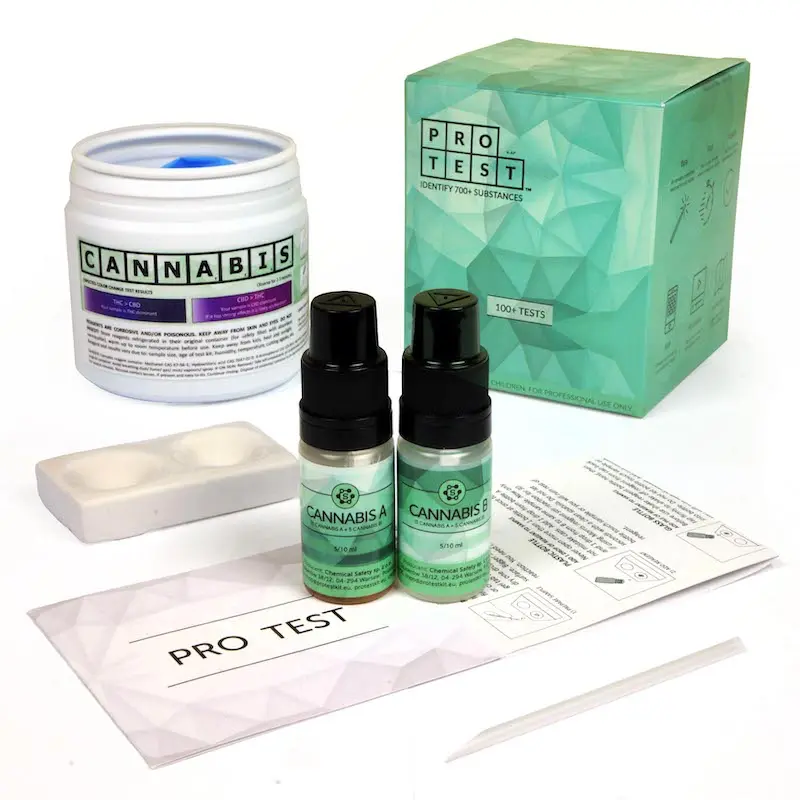How to test CBD flowers, hash and oils?
Cannabis products such as increasingly popular CBD rich flowers and extracts unfortunately often lack in quality control. Their potency is not strictly controled, which means that amount of CBD or even of the psychoactive THC can vary significantly from sample to sample. There had been cases of products being seized due to exceeding the legal THC limit, which can cause both unexpected trouble with the law as well as difficult experiences for unknowing consumers.
If you use CBD products for medical reasons, to help quit smoking tobacco or for other reasons, learn how to test your substances to stop wasting your health, money and time.
Risks of CBD products:
- Low CBD potency
- High THC potency
- Synthethic cannabinoids
- Magnifying glass helps confirm if flower is indeed cannabis by checking for trichomes and pistills.
- Cannabis (4-AP) reagent tells apart THC rich products from CBD rich products.
- Zimmermann reagent confirms if sample contains at least 1% CBD and can help compare potency of CBD products (roughly which is better).
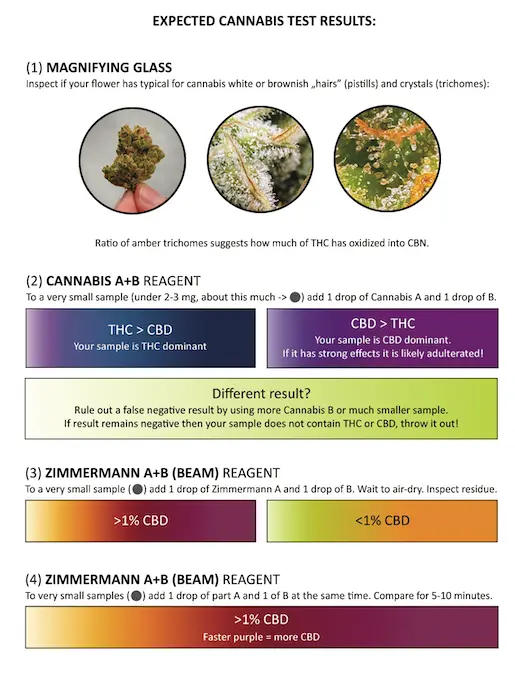
Cannabis test kit chart
Cannabis reagent test results
Major cannabinoids display different reactions with reagent tests Cannabis (4-AP) and Zimmermann. The first turns blue or blueish with THC dominant samples, while the latter turns purplish with CBD dominant samples. The required ratio for conclusive results has been established at 3:1 or more. Zimmermann reagent, which coincidentaly includes Beam reagent, turns reddish or purple with CBD. If the CBD content is low color can appear after drying, in this case such result is still binding.
The Cannabis reagent requires adding 1 drop of part A and at least 1 drop of part B. This test is insanely sensitive and surprisingly using too much sample can cause false negatives (not positives). Therefore we recommend to use very small samples, and in case of negative result add more part B.
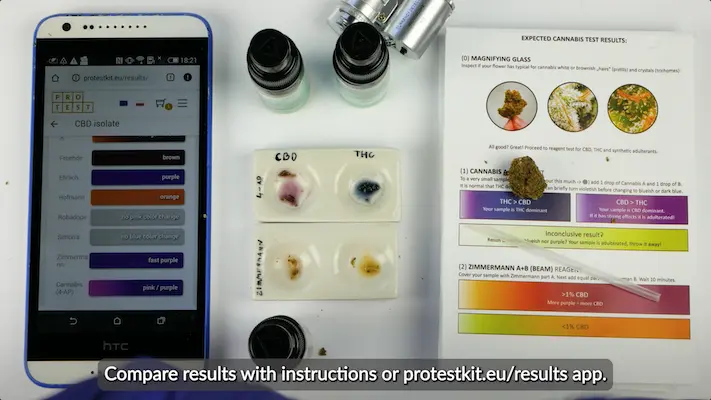
Cannabis reagent test kit results for CBD and THC
How to check percentage of CBD or THC?
To test percentage of CBD and THC at home a TLC Cannabinoids Test Kit is required. This test involves extracting cannabinoids from sample and developing it on special testing card using included testing liquid. The cannabinoids present separate and allow for measuring them individually with the help of special calibrated percentage rules. Everything required is included in the test kit, as shown on the video below.
How to use TLC dye?
The Cannabinoids Test Kit alows for estimating potency and purity, but it should always be used paired with reagent tests which idenfity detected compounds. These reagents can be both the earlier mentioned reagent tests, or a special TLC dye which can be applied directly onto TLC testing card to reveal results to naked eye. Otherwise the results are visible either by using UV-C light (included in the TLC kit), or in the case of THC by exposing testing card to light source for at least 30 minutes.
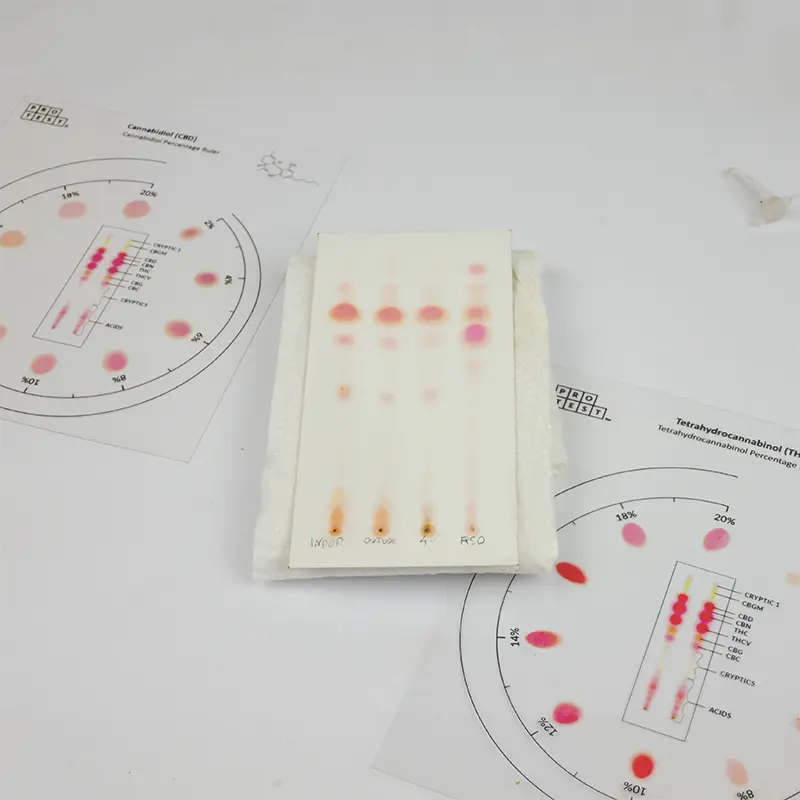
Cannabinoids test kit results
TLC dye helps tell apart CBD and THC and a few minor cannabinoids such as CBC, CBG or THCV. Most importantly CBD turns orange, while THC turns pink. Colors might be more dull if not enough dye has been applied or dissolved.
Cannabinoids test kit
The best reagent test kit for CBD, THC and other cannabinoids is PRO Test’s CBD / THC Reagent Test Kit which includes reagents Cannabis and Zimmermann. It can reliably confirm presence of CBD, THC and help rule out synthethic cannabinoids such as MDMB-PINACA. To check the potency % of CBD or THC pair reagent tests with the TLC Cannabinoids Test Kit.
Recommended CBD test kits:
A positive or negative test kit result does not indicate if a substance is safe. No substance is 100% safe.
